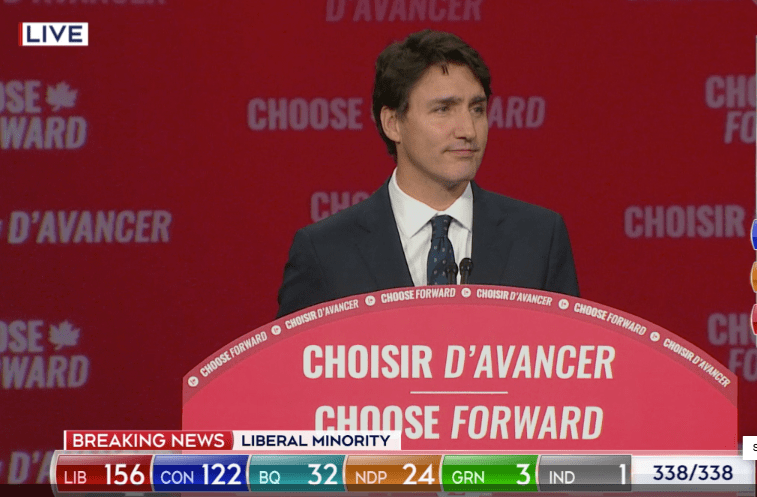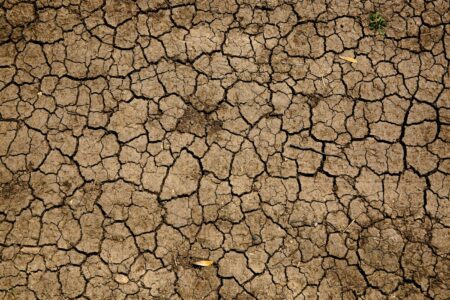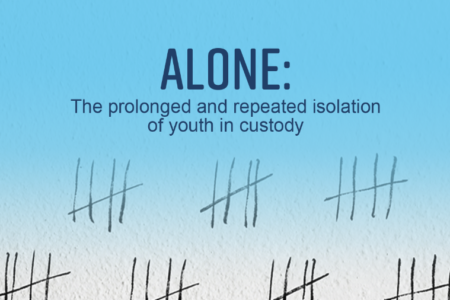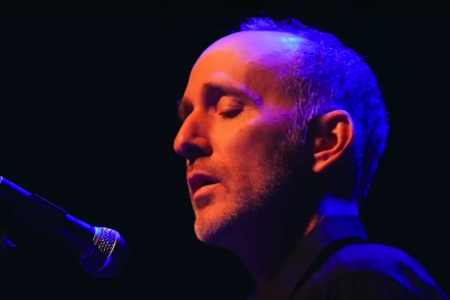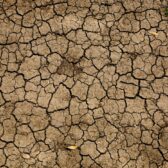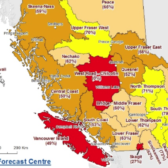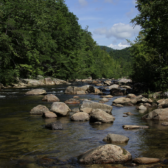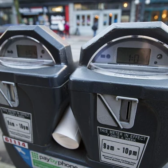Liberals hang on for minority government while Bloc surge forward and NDP poised for partnership
The Liberal red tide that swept the nation four years ago slowed to a trickle on election day in 2019 but it was enough for the Grits to step back into the shoes of government, albeit in a minority role.
Prime Minister Justin Trudeau took the Liberals to a repeat as the government of Canada with 156 seats, 14 seats short of a majority government (out of 338 seats overall).
This time around the Conservatives were close behind at 122 seats, with 60 seats divided up among the Bloc Quebecois (32), the New Democrats (24), the Green Party (three) and one independent candidate.
Throughout the 40-day campaign the Liberals and the Conservatives were deadlocked in the polls, but when it came down to election day the results set up a definite geographical divide, with almost all Liberal seats coming east of Saskatchewan and the Conservatives dominating Alberta.
The results dropped the Liberals by 28 seats, giving ground to both the Andrew Scheer-led Conservatives (up by 23 seats) — who will again form the Official Opposition — and the Bloc.
The Bloc will enter the 43rd Parliament with a greater presence, continuing a growth trend from 2015 when they jumped from only two seats to 10. It has been two elections since the Bloc obtained official party status.
The New Democrats continued their slide from a high of 95 seats in 2011 to 44 in 2015, dipping to only 24 in 2019. Locally, NDP incumbent in the Kootenay-Columba riding, Wayne Stetski, was defeated by Conservative candidate Rob Morrison by more than 7,000 votes — 29,893 to 22,707. However, to the west the NDP’s Richard Cannings retained the South Okanagan-West Kootenay.
But with the Liberals in a minority position it could favour the NDP despite their abysmal showing. The Liberals need the help of at least one other party — like the NDP — to govern in the House of Commons.
The minority government could continue and try to govern on a vote-by-vote basis, or through a formal coalition with another party.
Despite the slip in the number of seats and overall support from four years ago — they were nearly equal with the Conservatives in popular vote — the Liberal support was spread more evenly than that of the Tories, meaning the Liberals captured more constituencies.
The Green Party edged up in 2019 from one seat to three, eclipsing their total of two in 2011.
The outcome, although still a victory, pales in comparison to the Liberal Party’s increase of 148 seats from the previous election, the largest-ever numerical increase by a party in a Canadian election. Prior to the campaign, the Liberals had held only 36 seats — the lowest number of seats ever held at dissolution of parliament by any federal party that won the following election.
And with a separatist agenda still firmly entrenched, the Bloc surged back into focus with 32 seats, but Bloc leader Yves-Francois Blanchet said that although the party would not obstruct the House, the party would continue to stand for separation.



